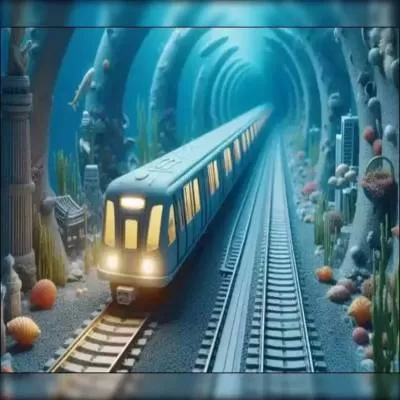

Earlier this month, India celebrated a significant milestone in its transportation infrastructure with the inauguration of the country's first under-river metro train service in Kolkata. The Howrah Maidan and Esplanade corridor, a remarkable feat of engineering, welcomed its first passengers, marking a historic moment for the nation.
The inaugural service, traversing beneath the Hooghly River, garnered an overwhelming response with approximately 70,000 passengers on its maiden voyage. This success stands as a testament to the Kolkata Metro's efficacy in meeting the public's transportation needs. However, the journey to this achievement was not without its obstacles, as revealed by project experts.
A pivotal aspect of overcoming these challenges was the collaboration between India and Germany. Specially designed German-made tunnel boring machines (TBMs) played a crucial role in navigating the unforeseen hurdles encountered during the construction phase. Afcons Infrastructure Limited, a multinational construction and engineering company, underscored the uniqueness of these TBMs and their contribution to the project's success.
Tamal Biswas, Project Manager at Afcons Infrastructure Limited, highlighted the complexities of Kolkata's soil, emphasizing its treacherous and unpredictable nature. The presence of underground channels and aquifers connected to the Hooghly River posed significant challenges that required innovative solutions.
The journey towards realizing the underwater corridor began with meticulous planning and technological prowess. A thorough understanding of the soil conditions and project requirements preceded the manufacturing of the German TBMs, which boasted several special features tailored to the Kolkata Metro project.
In a multi-nation collaboration, experts from Russia, South Africa, and Europe, alongside German engineers, lent their expertise to the project. This diverse team navigated the complexities of under-river tunnel construction, leveraging their collective knowledge to overcome obstacles.
One of the most remarkable features of the project was the continuous operation of the TBMs without interruption. Unlike traditional tunnel boring processes, where machines are periodically serviced, the Kolkata Metro TBMs operated seamlessly, covering a distance of 4.8 km across three stations without resurfacing.
Moreover, the TBMs were equipped with special features, including the capability to function as submarines in case of river water ingress?a testament to the project's thorough planning and risk management.
The successful inauguration of the 4.8-km-long underground stretch on March 6, marked by Prime Minister Narendra Modi, signifies a significant leap in India's transportation infrastructure. As commercial operations commenced on March 15, Kolkata Metro's underwater corridor stands as a symbol of innovation and collaboration, heralding a new era in India's metro rail network.